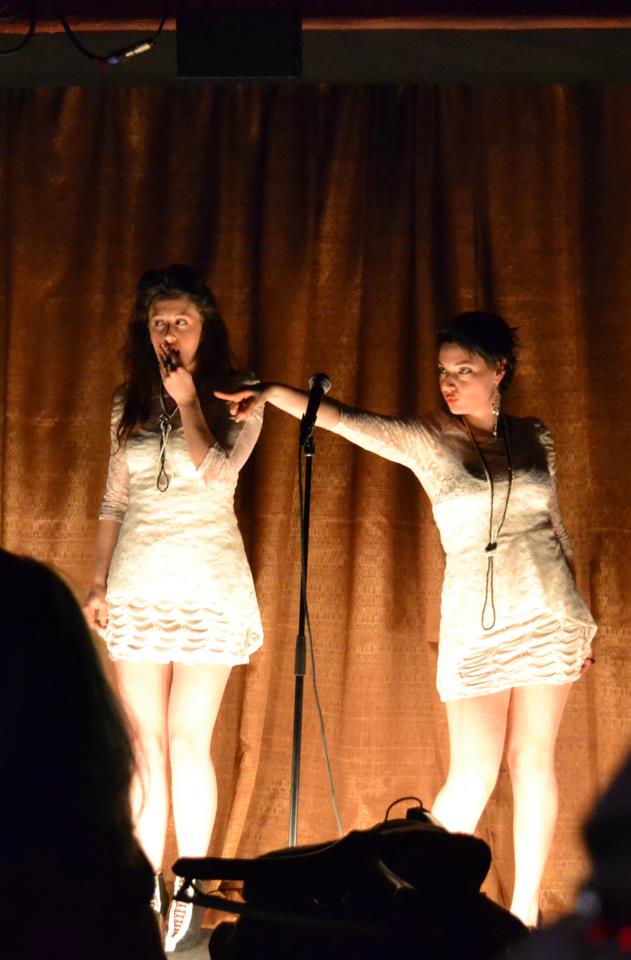You know something hardly anyone ever talks about? Lighting design. At the Yale Cab’s recent run of Mac Wellman’s Dracula, directed by second-year director Jack Tamburri, Masha Tsimring’s lighting was a joy to behold. Consider that there were five different areas of the Cab in which actors performed, not to mention wandering areas in between, and consider that they all had to be illuminated in such a way as to serve a variety of dramatic purposes—from creepy to funhouse to vaudevillian. Tsimring’s skill at doing just that was impressive—the lighting was to a large degree responsible for creating the necessary magic, that intangible something that allows us to believe a YSD student standing a few inches away from the audience is actually existing in an entirely different space, a world where the undead walk and insane inmates eat sparrows and the Victorian era’s “angel of the house” becomes a blood-sucking fiend. I single out Tsmiring’s work because I found myself marveling at it several times in the course of the evening, but a special round of applause should be given to the entire technical team: Seth Bodie (Costume Design—Drac’s sumptuous get-up and the vamping Vampirettes’ lacy nothings, and Simmon’s Mary Poppinsesque lackey, and the oh-so-Masterpiece Theatery duds for the bourgeoisie—Jonathan, Mina, and Seward—and Lucy’s transformation from a good girl’s frilly nightwear to a party girl’s knock ‘em undead one-piece); Reid Thompson (Set Design); Jacob Riley (Sound Design); Michael F. Bergman (Projection Design); Adam Rigg (Puppet Design); Matthew Groenveld (Technical Director); Karen Walcott and Nicole Bromley (Special Effects); Steve Brush (Sound Engineer); Nate Jasunas (Scenic Artist); Keny Thomason (Technical Assistant); Alyssa K. Howard (Stage Manager); Xaq Webb (Producer). This was a show where the technical aspects of simply putting it on in the Cab’s claustrophic space was remarkable in itself. As you can tell from that roll-call, much talent and effort was expended and was greatly appreciated.
What was it all in service to? Mac Wellman’s cut-ups of the oft-adapted tale of Dracula, as stirred up into a boiling-over broth by Jack Tamburri. You know the drill: Dracula (Inka Guðjónsdóttir), ancient Transylvanian Count, invites Jonathan Harker (Lucas Dixon), a Brit real estate agent, to his home in the Carpathian mountains (aka “the land beyond the forest”) to discuss buying some property in England. Along the way the latter is spooked by the locals’ superstitions regarding vampires, and then some nasty things happen to him. In Wellman’s version, Harker becomes a patient at an asylum that happens to be next to the property that Drac bought. The Count comes to England and proceeds to vampirize the marriageable Lucy Westenra (Marissa Neitling) who has three suitors: Dr. Seward (Jack Moran) of the asylum, who also courted, in her maidenhood, Harker’s wife, Mina (Hannah Sorenson); the obligatory American Quincey Morris (Justin Taylor); and the vampire expert Prof. Abraham Van Helsing (Brian Wiles). In the world of Stoker’s original novel, if, to protect her from demonic influence, you’ve been in a young maiden’s room, where she slumbers in a coma in her nightdress, you pretty much have to ask to marry her. What happens, in most versions, is that Drac is stopped, and everyone emerges sadder but wiser.
Wellman jazzes all this up considerably but is amusingly faithful to much of the narration (lots of it told through letters and journals, so in a kind of direct address even in the novel) and to much of the breathless “I feel so queer” aspects of the original. Key to the tone is Neitling’s curiouser and curiouser Lucy, a charming girl apt to salivate over males and praise their stalwart natures intermittently, and who finally becomes a fiendish feral creature. It’s quite a transformation and Neitling is a blast. Add some great fun from Sorenson, a priggish Maggie Smith understudy as Mina, and Dixon, having the time of his life humping walls and delectating over insects, as well as Moran as a creepy Seward, a character Wellman makes a linchpin of ambivalence in this tale, and Matt Gutshick’s leering cockney attendant, and Brian Wiles giving one of the funniest performances I’ve seen in a while as the daffiest Van Helsing one could imagine. Then, of course, there’s the quiet dignity and supercilious superiority of Guðjónsdóttir’s Count, all cheekbones and aquiline nose and large, lambent eyes and aristocratic, feline accent.
And if all that’s not enough, there are songs, and puppets, and blood tranfusions while Seward and Mina couple against a wall, and a baby in a bag, and a dog in a dressing gown, and Halloween make-up and high Gothic camp. To what end? The Count is coming to America (where he’ll probably open his own nightclub, or maybe a cabaret…), and those thirsty girls Lucy and Mina get a whole new lease on undying life.
This is the most fun the Cab’s been in a while, sexily superior silliness brought off in style.
Mac Wellman’s Dracula Directed by Jack Tamburri
Yale Cabaret February 16-19, 2012
